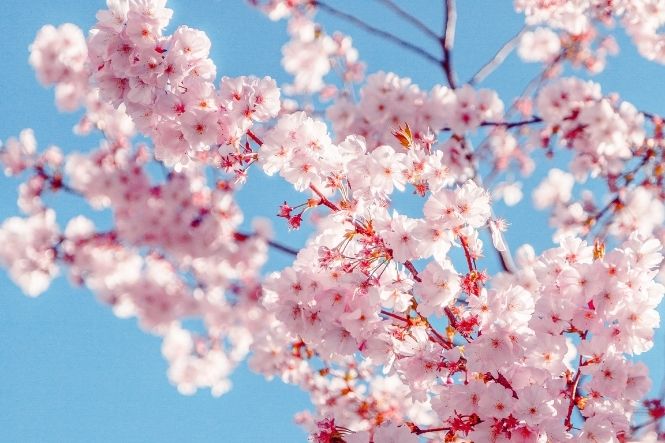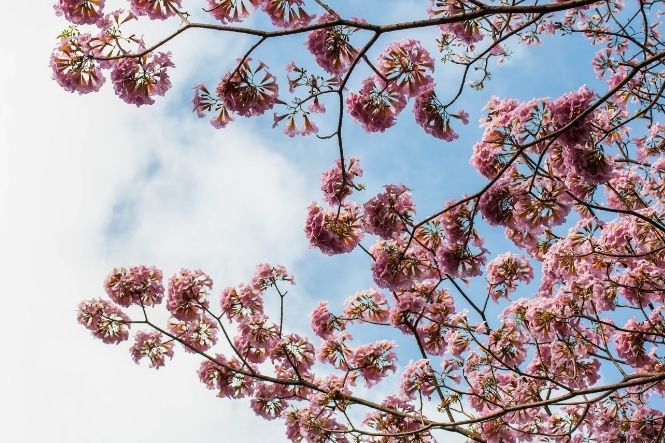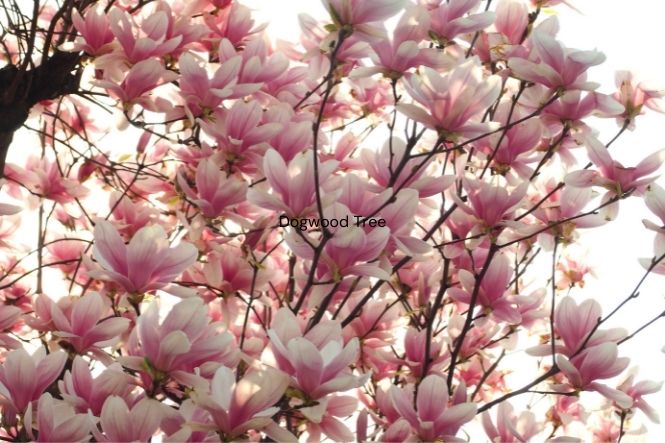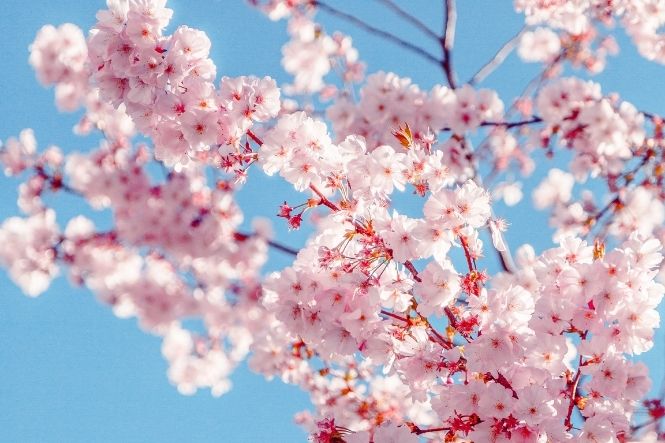Many gardeners are fans of the color pink, but struggle with introducing the color into their landscaping. This article will help you pick the right tree to ad a splash of pink to your work!
Nature is awash in beauty, but some gardeners are constantly on the lookout for new colors to add to their spaces. Pink is often one of the more difficult to acquire, but fortunately, there are a variety of trees that can produce beautiful shades of pink.
In addition, these pink-flowering trees can be found in all shapes, sizes, and levels of climate tolerance. Here are just a few of the many options to add some pink to your garden.
Table of Contents
Sakura
Famous in the United States for George Washington’s escapades, Sakura is the Japanese name for the more commonly known cherry tree. The cherry tree’s striking pink flowers appear in spring, often before their leaves. This leaves for a whimsical display of light pink that can create a beautiful contrast against an otherwise green background.
The cherry tree’s flowers come with five crispy petals. They are not very leafy, so when viewed from a distance, a cherry tree can almost appear to be covered in a layer of bright pink crystals. Whether or not one is interested in the cherry tree’s fruits, the flowers alone can make a beautiful addition to any garden.
Potential horticulturalists in cold climates should note that the flowering cherry tree can remain healthy until roughly zero degrees Fahrenheit. Any prolonged exposure to colder temperatures can damage the tree. Furthermore, the flower petals will only last roughly 2 to 3 weeks, so individuals who prefer cherry tree flowers might want to invest in different strains of Sakura that have staggered grow periods.

Magnolia
The magnolia tree can provide a very delicate but elegant hint of pink to any garden. While a famous symbol in the southeastern United States, magnolia trees are surprisingly resistant to the cold and tolerate frost well. Their flowers are wide across (anywhere from 4 to 12 inches in diameter), and their petals curve upwards into a sort of teacup shape.
Like the cherry tree, magnolias flower in the spring before their leaves appear, but their flowers have been reported to bloom anywhere from red, light pink, or even white flowers. Gardners should be careful of the strain of magnolia they are planting to be sure that they will bloom in the desired color, be it pink or otherwise.
Magnolia trees can grow to anywhere from 12 to 40 feet tall, leaving plenty of options depending on the dimensions and logistics of the space one is planning around. The magnolia in general is a beautiful plant that offers plenty of variety no matter what color, shape, or size a person is looking to add to his or her yard.

Pink Trumpet Tree
As the name suggests, the pink trumpet tree produces striking flowers of a trumpet-like shape. The tree has flourished in the moderate climates of both California and Hawaii, resulting in a plant that grows anywhere from 30 to 50 feet tall, and its canopy ranges from 30 to 40 feet in width.
This beautiful specimen will require considerable space for and residential planting, but the trumpet tree’s purple to light pink flowers can make a beautiful addition to commercial landscapes that have the room to accommodate its dimensions.
While the trumpet tree is native to South America, naturally spreading from Argentina throughout Mexico, it has been brought as far north as California. Unfortunately, the tree does not tolerate the cold well, as it cannot survive in areas that typically experience winters in less than 20 degrees Fahrenheit.
Luckily, the pink trumpet requires only minor pruning and maintenance and only requires watering for those who are serious about maximizing their tree’s bloom. The tree will require structural support in its sapling period, but supports are to be removed as soon as the tree is able to support itself in order to build up the strength of its core.
While limited in growable climates, the trumpet tree can be a beautiful addition for a space that can accommodate it and is very low maintenance once it has passed the sapling stage.

Dogwood Tree
Much like the magnolia tree, the dogwood offers strains that bloom in colors anywhere from red to white and all shades of pink in between. Unlike the magnolia, the dogwood generally produces smaller flowers with petals that taper to a point.
Dogwood flowers bloom throughout the spring (when exactly depends on the strain’s specific genetics), but the petals will turn to a deep red or purple in the fall, which can create a dramatic experience depending on what specifically an individual’s goals are.
The dogwood is the state tree of Virginia, but sub-species can be even be found in California. It requires moderate sunlight and moderate watering. The tree flourishes near rivers and streams, but it will not last in areas that are consistently flooded. Likewise, the dogwood will require irrigation if planted in a particularly dry climate.

Oleander
The oleander is a small tree that grows anywhere from 7 to 20 feet tall, but it tends to the smaller end of this range, making it perfect for gardeners working within more confined spaces. Despite the oleander’s more diminutive stature, its leaves are poisonous, so people should be careful of planting this tree in areas near children and pets.
With this being noted, the oleander is often praised for the scent of its pink to white tubular flowers. It is native to Nort Africa and the Mediterranean. As a result, it does well in similar climates. In the United States, the oleander does very well in Southern California.
The tree does well in coastal environments, so salty breezes should be of no concern. Furthermore, after the sapling stage, the oleander requires little to no watering. Pruning should be done at the discretion of the gardener depending on the shape desired and the landscape they are working with.
While pink may seem rare in nature, gardeners should be comforted in finding that there is a huge selection of trees that can add a splash of pink to their gardens. There is a multitude of trees that can bloom in different shades and shapes, grow to different sizes, and tolerate various climates. No matter what, there is a tree out there for every garden!



